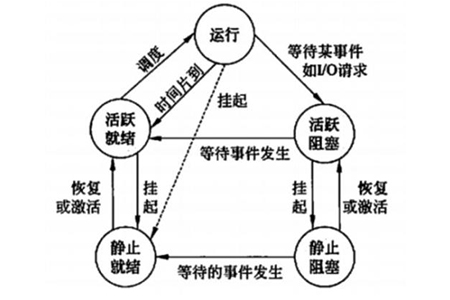Home >Backend Development >Python Tutorial >The difference between multi-threading and multi-process in python
The difference between multi-threading and multi-process in python
- 清浅Original
- 2019-04-08 11:20:275703browse
The differences between multi-process and multi-threading in Python are: threads need to be executed in the process, and a process can contain multiple threads; processes can share the same address space and processes share physical addresses, thread creation is simple, and processes need to Process cloning, etc.
What I will share today is the relevant knowledge and differences between multi-process and multi-threading in Python. Next, I will introduce it in detail in the article, which has certain reference value and I hope it will be helpful to everyone

[Recommended course: Python Tutorial]
Concept of thread:
Thread is the smallest unit for operation scheduling in the operating system. It is included in the process and is the actual operating unit in the process. A thread refers to a single sequence of control flow in a process. A process can have multiple threads, and each thread can perform different tasks at the same time. A thread can be regarded as a series of instructions required for execution by a CPU
Multi-threading
The Python standard library provides two modules: _thread and threading , _thread is a low-level module that does not support daemon threads. When the main thread exits, all child threads will be forcibly exited. Threading is an advanced module that encapsulates _thread to support daemon threads. In most cases we only need to use the advanced module threading.

The concept of process:
A process refers to an execution process of a program on a given data set, which is a system An independent unit for resource allocation and execution calls. That is, each application has its own process. When a process starts, it will first generate a thread. This thread is called the main thread, and then the main thread creates other child threads
Multiple processes:
Multiple processes The process is the multiprocessing module that provides remote and local concurrency. In the usage scenario of a multiprocessing library, all child processes are started by a parent process. This parent process becomes the madter process, which manages a series of object states. Once this process exits, the child process is likely to be in an unstable state, so the parent process should do as little as possible to maintain its stability

Threads and processes The difference
(1) The thread must be executed in a certain process. A process can contain multiple threads, and there can be only one main thread.
(2) Multiple threads share the same address space, open files and other resources. Multiple processes share physical memory, disks, printers, and other resources.
(3) Threads occupy almost no resources, have low system overhead, fast switching speed, and multiple threads in the same process can share data, but cannot be shared between processes
(4) The creation of a new thread is very simple, but the creation of a new process requires cloning of the parent process
(5) A thread can control and operate other threads in the same process; but a process can only operate child processes
Summary: The above is the entire content of this article, I hope it will be helpful to everyone.
The above is the detailed content of The difference between multi-threading and multi-process in python. For more information, please follow other related articles on the PHP Chinese website!

